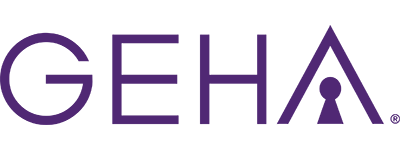The opioid epidemic is a nationwide problem, but there are geographic hotspots that have mortality rates twice the national average or higher. Maricopa County, Arizona is one of them.
Among all age groups, Arizona recorded more than 1,800 opioid-related deaths in 2023. All opioids contribute to these deaths, including morphine, an analgesic narcotic used to treat pain. The risk of overdose is higher when morphine is taken in higher or frequent doses or when a person returns to use after a period of cessation.
The best ways to protect yourself and loved ones from this epidemic is through awareness and education. This includes managing pain without opioids when possible, using opioids in the lowest dose and smallest quantity, and recognizing what opioids like morphine look like. Wolf Creek Recovery has seen the devastating effects of the opioid crisis, and we educate clients and their families on these very precautions.
Below is more information on morphine identification, including how to recognize this substance by packaging, street names, and labeling.
Morphine Identification
With the current opioid epidemic still claiming lives, it’s crucial to know how to identify morphine. While this medication can be valuable in treating severe pain, it can be dangerous when taken unintentionally or misused. Being able to recognize morphine by its appearance, labeling, or even its slang names helps prevent medication errors, accidental ingestion, and overdose.
How to Identify Morphine From Other Types of Opioids
Morphine is one of the more well-known opioids, but distinguishing it from other opioids, such as oxycodone, hydrocodone, fentanyl, or heroin, can be important for both medical use and safety reasons. Morphine is typically available in tablet, liquid, or injectable form and is primarily used for severe pain management. It comes directly from the poppy plant, making it a naturally occurring opioid, unlike many others that are semi-synthetic or fully synthetic.
Chemically, morphine has a distinct structure that can be identified through laboratory testing such as urine, hair, or blood analysis. These tests can differentiate morphine from other opioids by detecting certain metabolites. For example, morphine breaks down into morphine-3-glucuronide and morphine-6-glucuronide, whereas oxycodone and hydrocodone break down into different metabolites.
Visually, morphine pills come in different shapes and colors depending on the manufacturer and dosage, but they are generally marked with identifying numbers. However, since many opioids look similar, it’s not the best idea to rely on visual identification alone. Medical professionals rely on more thorough testing to identify morphine, such as prescription records, toxicology screens, and patient history.
Different Packaging of Morphine
Morphine is available in a variety of packaging depending on how it’s being administered, the setting it’s being used in, and its purpose. These variations help medical professionals ensure safe dosing, ease of use, and proper storage.
Tablets and capsules are often found in blister packs or prescription bottles and are available in immediate-release and extended-release forms. They are labeled with strength (e.g., 15 mg, 30 mg), brand or generic name, and manufacturer code. The tablet or capsule form of morphine is generally prescribed to patients who are at the end of life or dealing with active cancer pain.
Oral solutions of morphine are supplied in amber bottles with dosage cups or droppers. They are useful for patients who have trouble swallowing pills. However, this type of morphine requires careful measurement to avoid overdosing.
Injectable morphine is typically found in hospital and emergency settings and labeled with the concentration (e.g., 10 mg/mL) and route of administration. The injectable formulations may be packaged in single-use or multi-dose vials, ampules, or prefilled syringes. Less common forms of morphine include suppositories or transdermal pumps.
Slang Terms or Street Names for Morphine
Like many other opioids, there are a number of slang terms and street names for morphine. You are most likely to hear them in settings where morphine is used illicitly. Knowing these terms is important, as it can help individuals recognize when someone is potentially misusing the substance.
Common street names for morphine are:
- Dreamer
- Emsel
- First Line
- God’s Drug
- Hows
- M
- MS
- Miss Emma
- Mister Blue
- Morph
- Morpho
- Unkie
In medical settings, such as hospitals and emergency rooms, morphine may be called by a brand name. For instance, Kadian refers to extended-release capsules, Arymo ER are extended-release tablets, and DepoDur is a single-dose injectable formulation.
Why It’s Important to Identify Morphine Correctly
Properly identifying morphine is crucial for both medical safety and public health. As a powerful opioid, morphine is used to treat severe pain, but it carries a high risk for misuse, dependence, and overdose. Whether you find a loose pill in your home, or you or a family member is prescribed morphine, it’s important that you’re able to accurately identify the substance. Remember, too much morphine can be fatal, causing dangerously slow breathing that can lead to unconsciousness and death.
In emergency settings, it’s also important to be able to identify morphine quickly so that healthcare providers can respond with the appropriate treatments. Naloxone can be used to counter the effects of opioids like morphine, restoring normal breathing in just minutes. Identification even matters in substance use prevention, as it can be confused with other opioids, especially in illicit forms. Knowing how to spot morphine by its physical appearance, packaging, or street names can help individuals spot misuse early and intervene appropriately.
Get Treatment for Morphine Use Disorder in Prescott, AZ
Treatment for morphine use disorder involves a multi-step approach to address both the physical dependence and psychological aspects of misuse. The goal of morphine addiction rehab is to help individuals safely withdraw from the substance, understand the root causes of their substance use, and build healthy habits that support long-term recovery. The first step is usually medically supervised detox, where healthcare professionals monitor and manage withdrawal symptoms such as anxiety, muscle aches, nausea, and cravings.
Medication-assisted treatment (MAT) uses FDA-approved medications to stabilize recovery, reducing cravings and withdrawal symptoms and blocking the effects of opioids to prevent return to use. However, these medications are most effective when combined with therapy and support, such as cognitive behavioral therapy (CBT) and dialectical behavior therapy (DBT). Aftercare and relapse prevention are also crucial in helping individuals maintain long-term recovery. With the right help, recovery isn’t just possible—it’s sustainable.
At Wolf Creek Recovery, we are prepared to walk the journey to recovery with you. Our treatment center offers a compassionate, evidence-based approach to healing, combining individualized therapy, personalized support, and the restorative power of nature through outdoor therapy. We meet each person where they are, helping them uncover their strengths and rebuild their lives. If you are ready to take the first step toward recovery, contact Wolf Creek Recovery today at 833-732-8202. Build a life you love.
FAQs About Morphine Identification
What forms does morphine come in?
Morphine comes in several different forms, including oral tablets, capsules, liquids, and injectable solutions. It also comes in extended-release and immediate-release formulations depending on the person’s needs and their severity of pain.
Where is morphine most likely to be found?
Morphine is typically found in medical settings, such as hospitals and emergency departments. It may also be found in the households of people with valid prescriptions, though improper storage can increase the risk of misuse or diversion.
What are some of the street names for morphine?
Slang terms for morphine include M, Miss Emma, Monkey, White Stuff, and God’s Drug. You are most likely to hear these names when morphine is being used illicitly.











